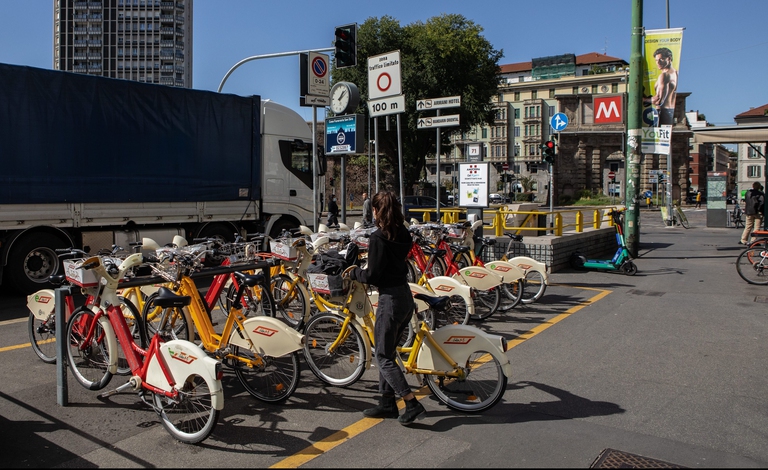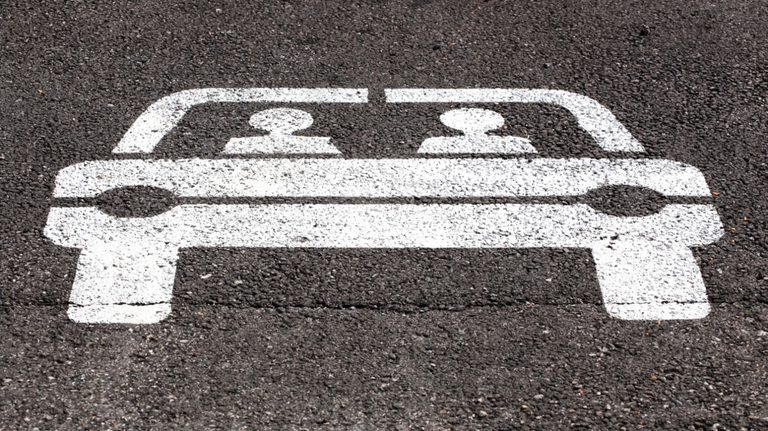https://www.lifegate.it/mobilita-in-sharing-accelera
- |
Mobility runs fast in sharing, which marks a marked growth in the number of vehicles, services and overall turnover generated by the sector.Last year the number of total rentals grew by 41 percent compared to 2021 for a total of approximately 49 million trips, a figure that is 77 percentage points higher than that of 2019, immediately before the pandemic.The data emerges from the seventh National report on sharing mobility, presented in recent days in Rome on the occasion of the conference “Lesscars:decarbonization of urban mobility” organized from the National Observatory of Sharing Mobility, promoted by the Ministry of Infrastructure and Transport, the Ministry of the Environment and Energy Security and the Foundation for Sustainable Development at the headquarters of Cassa Depositi e Prestiti.
Milan confirms itself as the Italian capital of sharing services
They are also on the rise active services in our cities, which grew from 190 to 211 in one year, and the number of vehicles available to sharing mobility users, which stands at 113,000 compared to 89 thousand in 2021.Excellent news for air quality in our urban centers, if we consider that as many as 95 percent of the shared fleet is zero emissions.In Italy the total turnover generated by the sector, exceeding 178 million euros in 2022 (+38 percent compared to the previous year).

At this point 67 provincial capital municipalities offer a sharing service, albeit with marked differences between the different areas of our country:from 77 percent in the urban centers of the north the figure drops to 50 percent in the center and 48 percent in the south and on the islands, which however have recovered 15 percentage points in the last three years.With 14.8 million total rentals and 30,700 vehicles available to users, Milan confirms itself as the capital of shared mobility both from the point of view of demand and supply of services, followed by Rome with 12 million rentals and 29,300 vehicles in the sharing fleet;Furthermore, the Lombardy capital is the third city in Europe for the increase in sharing micromobility in 2023.
Bikes, scooters and scooters:shared micromobility
Speaking of shared micromobility, the number of recorded trips exceeded 43 million, with data from rentals of individual services all increasing compared to 2021:+108 percent for free-floating bikesharing (which allows you to park your bike wherever you want at the end of the journey), +24 percent for station-based bike sharing (where it is allowed to leave the vehicle only in reserved spaces), +42 percent for one hundred electric scootersharing and +39 percent sharing scooters.Also interesting is the data on fleets, where the share of micromobility of the total it reaches 95 percent:essentially we are talking about 107 thousand light, space-saving and zero-emission vehicles.
The seventh edition of the Report also analyses accidents in sharing micromobility, based on data provided annually by operators.Compared to 2021, a general decrease in accidents per 100,000 rentals is observed:-56 percent for scooters (1.56 accidents per 100 thousand rentals), -52 percent for scooters (3.76 accidents per 100 thousand rentals) and -22 percent for bicycles (1.76 accidents per 100 thousand rentals) .
A "Darwinian" period is announced for the car
The 7th National Conference on sharing mobility also reserved a moment for the workshop entitled The future of the car, moderated by the journalist and Chief mobility editor of LifeGate Roberto Sposini.A future that in his speech Carlos Tavares, CEO Stellantis and Co chair of the forum Freedom of Mobility, he defined as “Darwinian, where only companies capable of adapting to the current context will be able to survive”.A workshop that shined a light on a future of the car still to be written:that electric and accessible as foreseen by the proposal of a social leasing advanced by the Macron government, the one integrated into ecosystems MaaS like the one experienced by the Piedmont region and the city of Turin.And, again, the car a rental as a vector forelectrification, finally to the (difficult) profitability of the car in carsharing.
A transport decarbonisation scenario
The National Sharing Mobility Observatory has outlined a decidedly positive scenario regarding the path of decarbonisation of the transport sector.We started from the assumption that, over the course of seven years, a significant increase occurs expansion of the share of electric cars already foreseen in National energy and climate plan (6.6 million electric and plug-in hybrids in 2030) and the reduction in the private motorization rate already foreseen in the Italian long term strategy, i.e. 4.5 million fewer cars in 2030 compared to today.

This scenario, combined with a 30 percent increase in the supply of public transport and sharing mobility, would lead to a reduction of 18 million tons of greenhouse gases. “The decarbonisation of urban mobility, thanks to a greater offer of public and shared transport services, growing electrification and the increase in soft mobility – explained the president of the Foundation for Sustainable Development, Edo Ronchi – can advance rapidly and reach the sector goal in a few years.Member States have a fundamental role in this strategy and now is the time to act."
A new form of sharing:the digital call bus
Finally, the Report includes an in-depth analysis on DRT services (Demand Responsive Transit):the services of buses and minibuses on call, operating through digital platforms and online applications, which manage to optimize the meeting between supply and demand, offering more dynamic and flexible solutions in terms of routes and timetables for users.
A picture emerges from the study interesting and positive signs.All the major digital platforms operating in the sector at an international level are now also present in Italy, and among the transport operators who have launched DRT services and experiments there are large companies and first-level players in Italian public transport.From an operational point of view, it is interesting to note that 65 percent of the services are intended to serve areas with weak demand, integrating traditional scheduled services.
